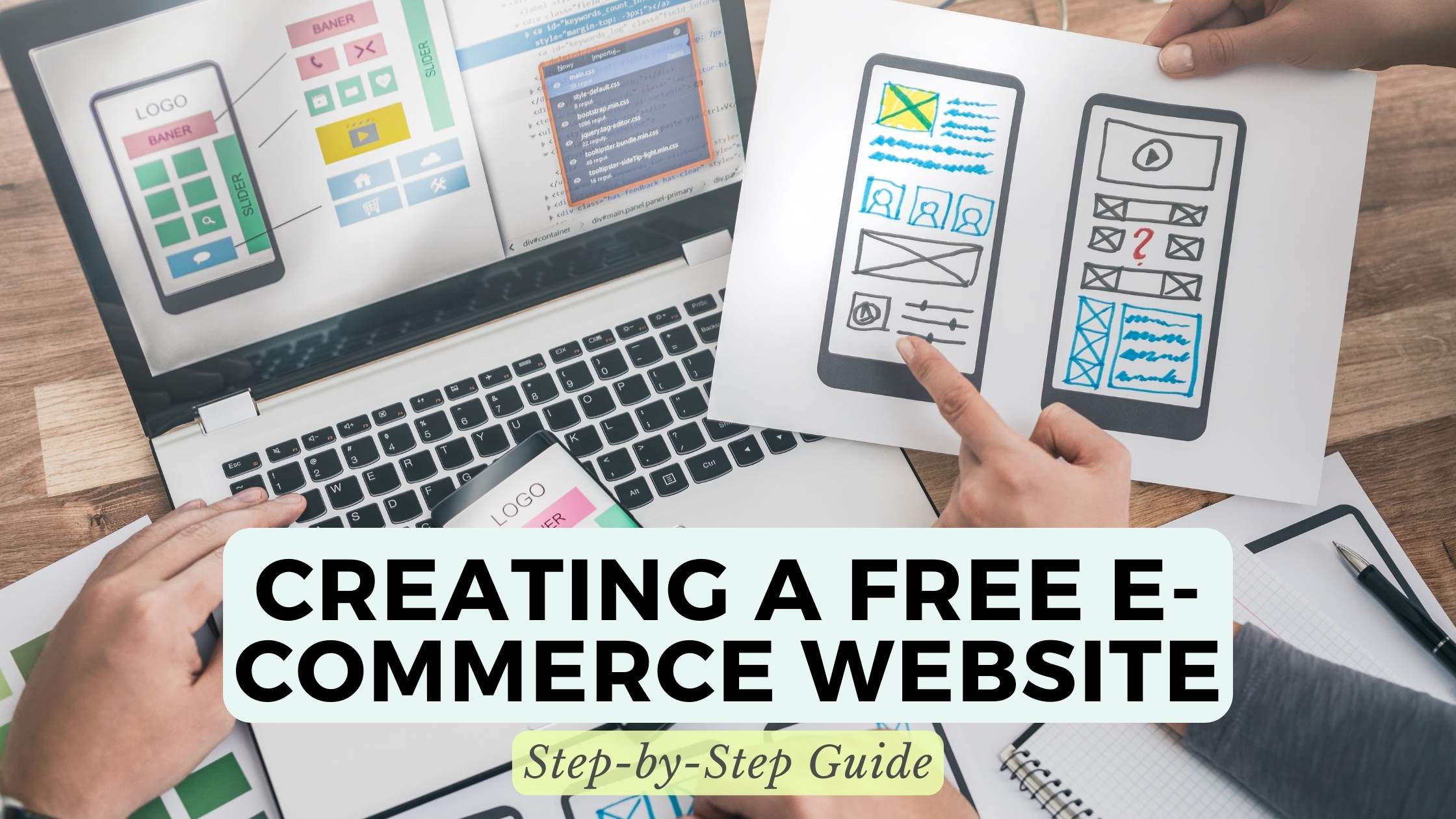Creating a Free E-commerce Website: Step-by-Step Guide


Creating a Free E-commerce Website: Step-by-Step Guide
In today’s digital age, establishing an online presence is essential for businesses of all sizes, especially for those looking to sell products online. However, the thought of creating an e-commerce website can be daunting, particularly for individuals and small businesses with limited resources. Fortunately, there are several user-friendly and cost-effective solutions available that allow you to create a free e-commerce website effortlessly. In this comprehensive guide, we’ll walk you through the step-by-step process of creating your own e-commerce website without breaking the bank.
Understanding the Basics
Before diving into the nitty-gritty of website creation, it’s crucial to understand the fundamental components of an e-commerce site:
1. Domain Name:
Your domain name is your website’s unique address on the internet (e.g., www.yourbusiness.com). Choose a domain name that reflects your brand identity and is easy to remember.
2. Website Builder:
A website builder is a platform that allows you to create and customize your website without any coding knowledge. Look for a user-friendly website builder that offers e-commerce functionality.
3. E-commerce Platform:
An e-commerce platform provides the tools and features necessary to sell products online, including product listings, shopping cart functionality, and payment processing.
4. Payment Gateway:
A payment gateway enables secure online transactions by facilitating the transfer of payment information between your website and your customer’s financial institution.
Step-by-Step Guide to Creating a Free E-commerce Website
Now, let’s walk through the process of creating your own e-commerce website for free:
1. Choose a Website Builder:
Start by selecting a website builder that offers e-commerce functionality. Popular options include Wix, Weebly, and WordPress with WooCommerce. These platforms provide intuitive drag-and-drop interfaces and customizable templates to help you design your site.
2. Sign Up and Select a Template:
Sign up for an account on your chosen website builder platform and select a template that suits your brand and industry. Opt for a template with built-in e-commerce features, such as product galleries and checkout pages.
3. Customize Your Website:
Customize your website by adding your logo, brand colors, and content. Create product pages for your merchandise, including high-quality images, detailed descriptions, and pricing information.
4. Set Up Payment Processing:
Choose a payment gateway that integrates seamlessly with your website builder. Popular options include PayPal, Stripe, and Square. Follow the instructions provided by your chosen payment gateway to set up payment processing on your site.
5. Configure Shipping Options:
Configure shipping options based on your business model and customer preferences. Determine shipping rates, delivery times, and international shipping policies if applicable.
6. Optimize for SEO:
Optimize your website for search engines by incorporating relevant keywords into your product descriptions, meta tags, and page titles. Use descriptive URLs and alt tags for images to improve visibility in search engine results.
7. Test and Launch Your Website:
Before launching your website, thoroughly test its functionality to ensure a seamless user experience. Test the checkout process, payment processing, and mobile responsiveness. Once everything is working smoothly, publish your website and promote it to your target audience.
Relevant SaaS Products
When it comes to creating a free e-commerce website, several SaaS products can simplify the process and enhance your site’s functionality:
1. Wix:
Wix offers a user-friendly website builder with e-commerce capabilities, allowing you to create a professional-looking online store quickly and easily.
2. Shopify Lite:
Shopify Lite provides a streamlined solution for selling products on an existing website or social media platform, making it ideal for businesses looking to add e-commerce functionality to their online presence.
3. WordPress with WooCommerce:
WordPress paired with WooCommerce is a powerful combination for building a free e-commerce website. With thousands of plugins and themes available, you can customize your site to meet your specific needs.
4. Big Cartel:
Big Cartel is designed for independent artists and makers looking to sell their products online. It offers a straightforward platform for creating a free online store with customizable themes and mobile-friendly design.
5. Ecwid:
Ecwid is a versatile e-commerce platform that seamlessly integrates with existing websites, social media platforms, and marketplaces. It offers a free plan with essential features for small businesses.
Conclusion
Creating a free e-commerce website doesn’t have to be complicated or expensive. With the right tools and guidance, you can establish a professional online store that showcases your products and attracts customers. By following this step-by-step guide and leveraging the resources available through Subscribed.FYI, you’ll be well on your way to building a successful online business.
For businesses seeking comprehensive insights into SaaS tools for website creation and e-commerce, Subscribed.FYI serves as a valuable resource. From website builders like Wix and WordPress to e-commerce platforms like Shopify and Big Cartel, Subscribed.FYI provides detailed information and comparisons to help you make informed decisions about your online presence.
Relevant Links:











